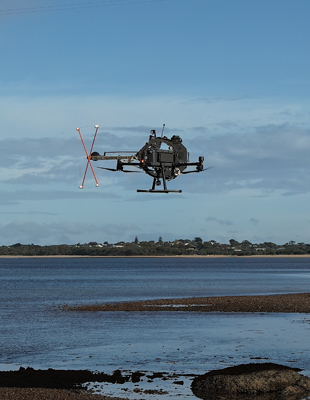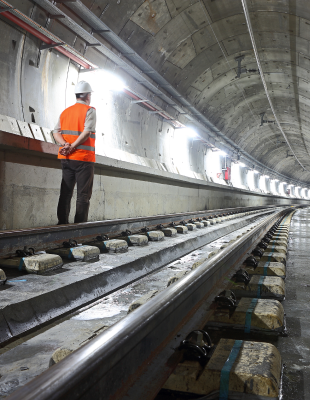Table of Contents
The challenge
To meet future demand Port Botany’s capacity needed to increase.
60
The $1 billion Port Botany Expansion was one of Australia's largest port infrastructure projects. To meet Sydney’s long term economic and trade growth - including a projected doubling of container traffic expected by 2015 - the port’s capacity required significant expansion to the container and land side logistics infrastructure.
The solution
A major expansion of the Port Botany container and land side logistics infrastructure.
10 million m3
Arcadis served as the Principal Consultant for the Port Botany Expansion design package. Our scope encompassed the design and modelling of all berth structures, dredging and reclamation planning, and the design of associated civil infrastructure, including utilities, roads, bridges, public realm works and environmental services.
Key works involved dredging 10 million cubic meters of material to create new shipping channels and berth boxes, reclaiming 60 hectares of land, establishing dedicated road access to the new terminal and adding tug berths and community facilities. The design needed to consider construction in an operating port environment adjacent to Sydney's International Mascot Airport while maintaining the delicate wildlife habitat of the Penrhyn Estuary.
-
Read more
The project focused on innovation that drove engineering solutions to challenging design problems, these included:
- Improved counterfort design using 9m wide units that saved on overall wall weight, benefitted the program and enhanced unit durability.
- Iterative soil structure design for the counterforts using site specific conditions, saving on materials and cost.
- Vibro compaction methodology was developed from onsite trials to develop compaction techniques that reduced stresses on the counterfort walls.
- Continuous Cope Beam and Crane Rail Beam eliminated joints over a 1.8km length providing efficiencies in construction and minimising differential movements.
- Seismic design was based on a dynamic displacement design method that enabled the client to make operational decisions on the quay wall performance in an earthquake event.
- Design and Construction monitoring of the berth structure and reclamation was implemented to provide the client with additional levels of confidence in the design and led to savings in materials.
The solutions developed at Port Botany have been utilised on subsequent Arcadis projects and the information gained from the onsite monitoring, particularly regarding vibro compaction, has proved invaluable in aligning design methods with actual material behaviour.
Environmental considerations included ecological protection measures for salt marshes, seagrass and bird habitats. We developed the Environmental Management Plan which incorporated multiple sub-plans and was successfully approved within tight timelines. These plans ensured the preservation of local flora and fauna.
Arcadis worked with our client managing stakeholder relationships with the local and wider community. Major community enhancements on the project included:
- Boat ramp: A three ramp boat ramp with pontoons for easy access and a large carpark for trailer parking and boat washing facilities.
- Fish cleaning facility: A modern fish cleaning facility with pelican and bird exclusion screening.
- Modern large amenities building, walkways and cycleways, enhanced foreshore access and lookouts.
The Impact
The project doubled the port’s capacity and set benchmarks for more recent infrastructure projects.
5
The Port Botany Expansion project set benchmarks for more recent infrastructure projects and has been recognised for its excellence through many industry awards. The project remains largely out of sight beneath the surface operations of the port and the surrounding Botany Bay. It laid the foundation of the ongoing development of Port Botany, not just by doubling the container capacity but also enabling the future development of the Port through improvements to rail and road infrastructure and enhancements to operating systems, resulting in its current capacity of 7 million TEUs per annum.
The project also set a benchmark for its engagement with the community and the enhancement of the environment, leaving a lasting legacy of a much loved boat ramp and associated facilities, a pedestrian bridge over Foreshore Road and enhancements to that road including footpaths, cycleways and extensive native vegetation plantings all providing a view of the revitalised Penrhyn Estuary with its bird roosting islands, expansion of the saltmarsh habitat mudflats and sea grass habitats leading.
Not done reading?
This also might be interesting for you
- Related Projects
- Related Insights
- Related Blogs









